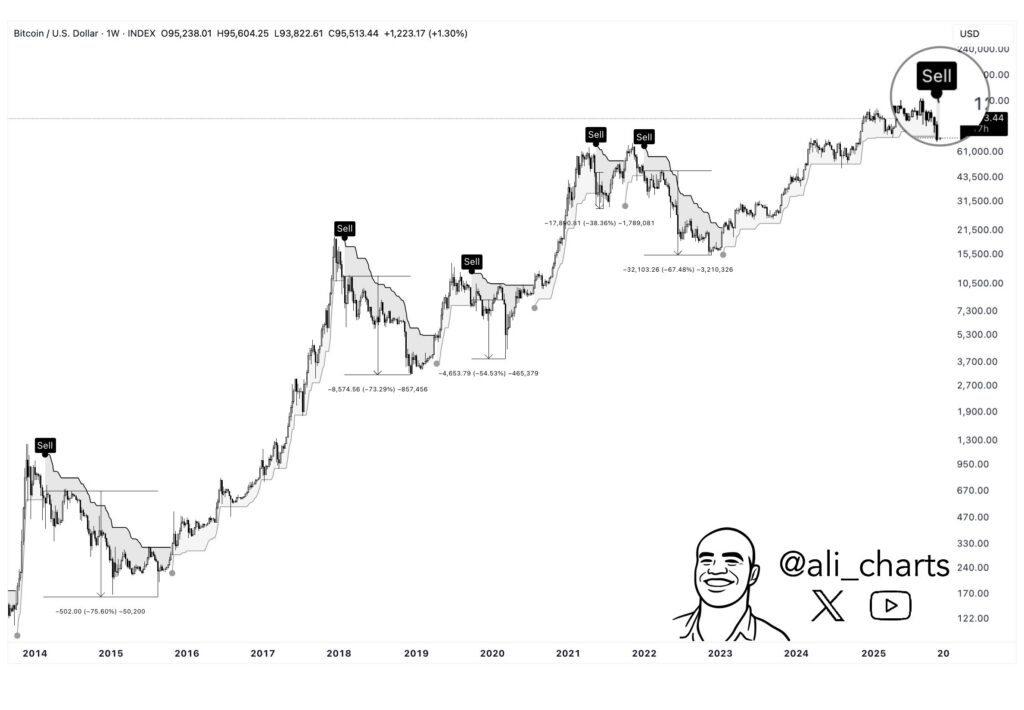
Bitcoin rebounds after falling below $90.000, but analysts warn of structural risks and potential corrections in the crypto market.
Bitcoin's price has moved strongly again. After a drop that took it to $89.180 on Tuesday, the world's most capitalized cryptocurrency rebounded to $94.000, before stabilizing around $92.800 per unit. The rebound has brought some relief to investors, but it hasn't dispelled the doubts that persist in the market.
For many analysts, this rebound in the price of Bitcoin is not enough to confirm a solid market recovery, and technical and macroeconomic signals continue to point to a scenario of high volatility and uncertainty.

Source: CoinGecko
Bitcoin under pressure: technical analysis points to further corrections
On Tuesday, Bitcoin fell below $90.000, reaching its lowest level since April and erasing the gains accumulated over the past six months. Although the price managed a partial recovery, technical analysts warn that the cryptocurrency has broken through key support levels, indicating that The downward pressure is still strong and it could be prolonged.
Ali Martinez, a renowned market analyst, points out that the SuperTrend indicator on the Bitcoin weekly chart has re-entered sales modeThis change, he explained, suggests that BTC may be beginning a new corrective phase.
Although the SuperTrend indicator doesn't guarantee results, its track record of accurate signals warrants attention. According to Martinez, if the decline persists, Bitcoin could break other critical levels, such as the immediate support between $83.000 and $84.000, and then move toward a much more solid consolidation zone located between $69.000 and $72.000. Martinez even raises Considering previous corrections under similar conditions, the price of BTC could fall to as low as $40.000.

“Every time the SuperTrend shifts to selling during the week, Bitcoin has historically responded with a significant drop.”the analyst stated.
Since reaching its all-time high in October, Bitcoin has lost more than 25% of its value. This decline leads some experts to believe that the peak of the current four-year cycle has already passed.
Despite this short-term context, a long-term optimistic outlook still prevails among many investors. Bitcoin's limited supply—with over 95% already mined—and its decentralized asset nature remain compelling reasons for those who consider it an alternative store of value. However, even the most enthusiastic investors acknowledge that the immediate future could be marked by further corrections and volatility.
Macroeconomic factors and liquidity are putting pressure on the market recovery.
Beyond price charts, there are structural factors that explain the fragility of the current BTC and cryptocurrency rebound.
Tom Lee, president of BitMine, has indicated that certain imbalances in the balance sheets of large market makers could be affecting liquidity and generating abrupt movements in the cryptocurrency, dragging down other crypto assets. Furthermore, macroeconomic uncertainty is another factor weighing on the price of Bitcoin and cryptocurrencies.
Furthermore, the outflow of capital from cryptocurrency-linked exchange-traded funds (ETFs) in the last week has been interpreted as a sign of caution from institutional investors. This suggests that, in the current environment, many fund managers are reducing their exposure to assets considered risky.
BTC trades as analysts assess the reboundA temporary upturn amid uncertainty?
Bitcoin's recent surge has offered a respite in a traditionally volatile market, but it hasn't dispelled the lingering doubts among analysts and participants. Despite the momentary optimism, multiple technical signals warn of potential selling pressures on the horizon, while the sustained outflow of institutional capital from exchange-traded funds adds another layer of uncertainty.
Furthermore, Bitcoin's strong correlation with other risk assets, particularly in a global context marked by economic tensions, fuels caution. Thus, although in the long term the leading cryptocurrency continues to be valued for its scarcity and decentralized nature, the path to a solid recovery in the short term appears uncertain.
In this scenario, prudence emerges as a key strategy for many investors and analysts, who are considering not only the dynamics of large capital flows, but also the impact of global macroeconomic factors that shape market perception and behavior.
Create your account and keep your finger on the pulse of the market

